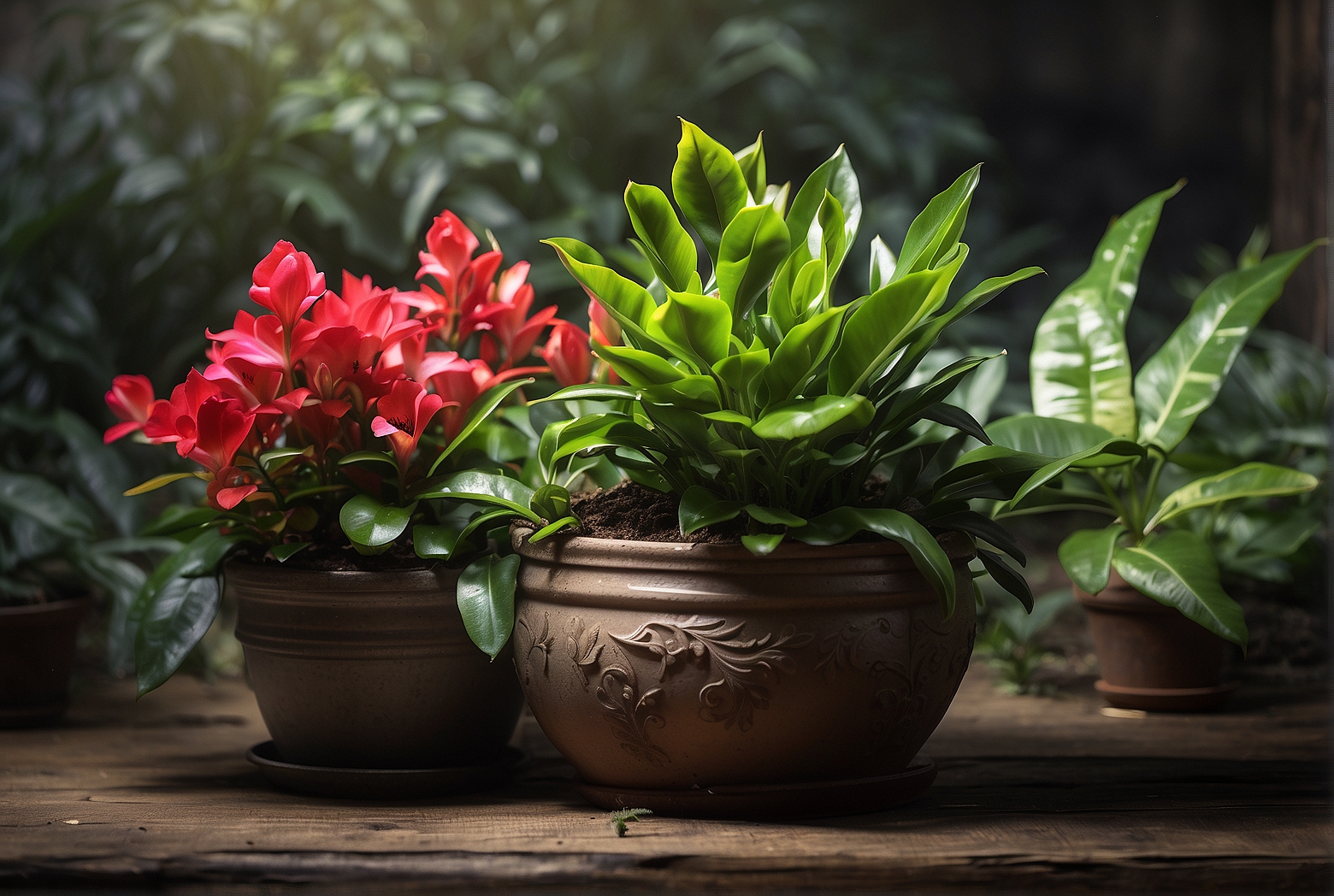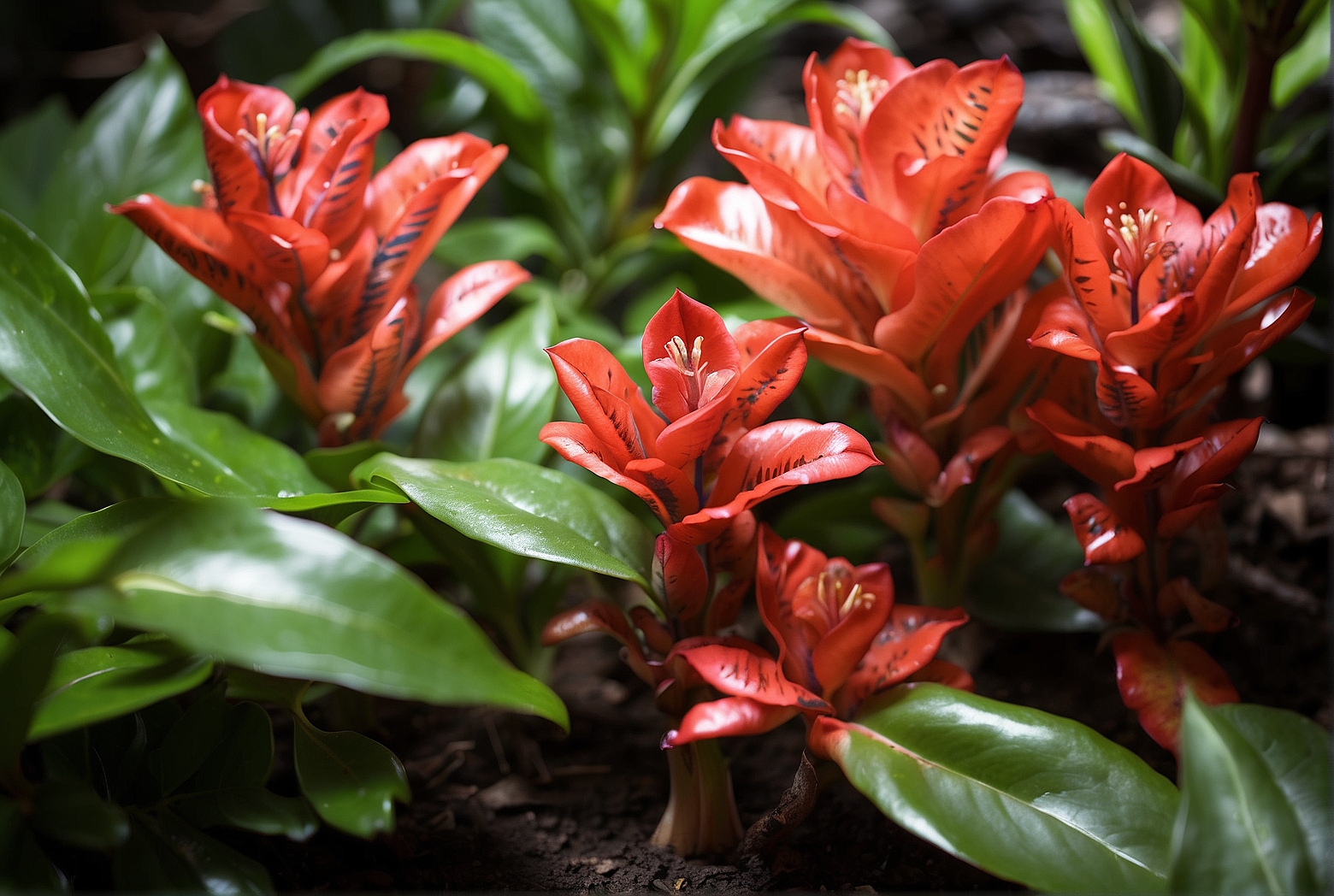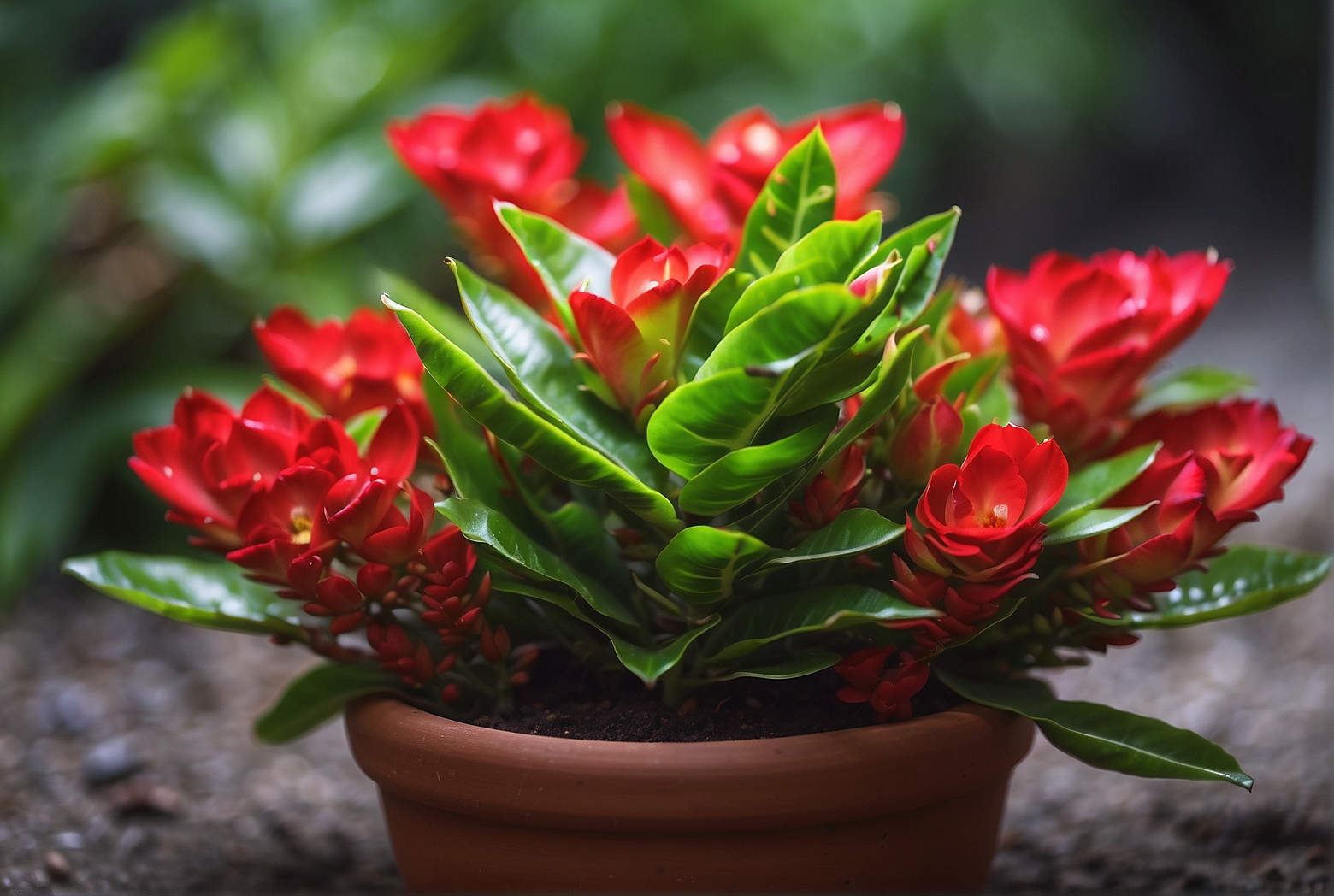Last Updated on March 31, 2024 by Tony Manhart
Have you ever wondered if ZZ plants are capable of producing flowers? Well, you’re in the right place! In this article, we will explore the intriguing question of whether ZZ plants, also known as Zamioculcas zamiifolia, have the ability to bloom with beautiful flowers. Get ready to uncover the secrets behind these stunning houseplants and discover if they hold a hidden surprise in their leafy green foliage.
Introduction to ZZ plants
Overview of ZZ plants
ZZ plants, scientifically known as Zamioculcas zamiifolia, are popular houseplants renowned for their ability to thrive in low-light conditions and require minimal care. These plants originated from Eastern Africa and have gained popularity worldwide due to their attractive foliage and adaptability. While ZZ plants are cherished for their lush and glossy green leaves, many plant enthusiasts wonder if these plants ever produce flowers. In this comprehensive guide, we will explore the fascinating world of ZZ plant flowering and provide valuable insights into their blooming cycles, characteristics of their flowers, indications of flowering, caring techniques to encourage flowering, and even delve into the misconceptions surrounding ZZ plant flowers.
Common features of ZZ plants
Before exploring the topic of ZZ plant flowering, let’s first highlight some common features that make these plants so beloved. ZZ plants are characterized by their upright and bushy growth habit, which makes them excellent decorative additions to any indoor space. The leaves of ZZ plants are thick, waxy, and have a dark green shade, giving them a captivating aesthetic appeal. One of the striking features of ZZ plants is their ability to store water in their succulent stems and roots, making them highly resilient and tolerant of occasional neglect. This trait makes ZZ plants suitable for individuals with busy lifestyles who may not have the time or expertise to care for high-maintenance plants.
Understanding ZZ plant flowering
Flower production in ZZ plants
Contrary to popular belief, ZZ plants do have the potential to produce flowers under specific circumstances. However, it’s essential to note that ZZ plant flowers are relatively rare and occur infrequently in indoor settings. The flowers of ZZ plants are small, tube-like structures that typically grow from the base of the plant. Their appearance is modest, with a yellow-green color and a subtle fragrance.

Factors influencing ZZ plant flowering
Various factors influence whether a ZZ plant will flower or not. One of the critical determinants is the maturity of the plant. ZZ plants require a certain level of maturity before they can produce flowers, usually taking between three to five years to reach the flowering stage. Additionally, the availability of optimal growing conditions, such as proper light exposure, temperature, and humidity, can greatly influence the likelihood of flowering in ZZ plants. Adequate care, including consistent watering and fertilization, is also essential to support flowering.
Natural blooming cycles of ZZ plants
In their native habitats, ZZ plants usually experience seasonal changes that trigger their blooming cycles. However, when cultivated as houseplants, ZZ plants often struggle to replicate these natural environmental conditions necessary for prolific flowering. As a result, it is relatively uncommon for ZZ plants to bloom indoors. Nevertheless, with proper care and attention, it is still possible to encourage ZZ plants to flower and enjoy the beauty of their delicate blooms.
Characteristics of ZZ plant flowers
Description of ZZ plant flowers
ZZ plant flowers have some distinct characteristics that set them apart from other plant species. These small flowers have a tubular shape and typically grow in clusters at the base of the plant. Each flower consists of a subtle combination of yellow and green hues, giving them a unique and understated charm. While individual ZZ plant flowers may be relatively inconspicuous, their collective presence can add a touch of elegance to any room.
Color variations in ZZ plant flowers
While the general coloration of ZZ plant flowers tends to be yellow-green, there can be subtle variations in shades and intensity. Some ZZ plants may produce flowers with a slightly brighter or paler yellow tint, while others may showcase a deeper green hue. These natural variations in color add to the allure and uniqueness of ZZ plant flowers.

Fragrance or lack thereof in ZZ plant flowers
Unlike many flowers that captivate with their intoxicating aromas, ZZ plant flowers are known for their lack of fragrance. They possess a subtle scent, often described as fresh or earthy, that is barely detectable unless one brings the flower close to their nose. The absence of overpowering fragrances makes ZZ plant flowers an ideal choice for individuals who are sensitive to strong scents or prefer a more subtle olfactory experience.
Indications of ZZ plant flowering
Signs that a ZZ plant is about to flower
Determining whether a ZZ plant is about to flower can be an exciting endeavor for plant enthusiasts. While ZZ plants do not exhibit explicit visual cues when they are about to bloom, there are a few signs that can indicate potential flowering. One common indication is the emergence of new growth points, specifically near the base of the plant. These growth points, often referred to as rhizomes, carry the potential to develop into flowers. Additionally, increased foliage growth and overall plant health can also signify that the ZZ plant is preparing for the blooming stage.
Timing of ZZ plant flowering
The timing of ZZ plant flowering can vary significantly among individual plants. As mentioned earlier, ZZ plants typically require several years to mature before they can produce flowers. The specific time when flowering occurs can also be influenced by factors such as the plant’s overall health, environmental conditions, and cultural practices. In general, ZZ plants are more likely to flower during the warm summer months when provided with ample light and optimal care.
Length of flowering period in ZZ plants
When ZZ plants do eventually flower, it’s important to note that the flowering period is relatively short-lived. The blooms typically last for a few weeks, after which they gradually wither and fade away. While the longevity of the ZZ plant’s flowers may not be as prolonged as some other plant species, their ethereal beauty during the flowering stage makes them a delightful sight to behold.
Caring for ZZ plants to encourage flowering
Optimal growing conditions for ZZ plant flowering
Creating the ideal growing conditions is vital to encourage ZZ plants to flower. Providing a warm and humid environment can simulate the natural climatic conditions that trigger blooming in ZZ plants. Maintaining a temperature range of 65-75°F (18-24°C) and humidity levels between 40-60% can create a favorable atmosphere for flowering.
Importance of proper light exposure
One of the key factors in promoting ZZ plant flowering is ensuring proper light exposure. ZZ plants thrive in medium to bright indirect light, making them ideal for spaces that receive filtered sunlight or are a few feet away from a bright window. Insufficient light can hinder flower production, so it’s essential to position the plant where it can receive the appropriate amount of light without direct sun exposure, which can cause leaf burn.
Watering and fertilization requirements for ZZ plant flowers
Consistent watering and appropriate fertilization are essential components of ZZ plant care to encourage flowering. ZZ plants prefer to dry out between waterings, so it’s important to establish a watering routine that prevents the roots from sitting in excess moisture. Overwatering can lead to root rot and impede the plant’s ability to produce flowers. Additionally, providing a balanced fertilizer every two to four weeks during the growing season can supply the necessary nutrients for ZZ plants to reach their flowering potential.
Propagation and reproduction of ZZ plants
Methods of propagating ZZ plants
Propagating ZZ plants can be an exciting venture for plant lovers, allowing them to expand their collection or share the joy of ZZ plants with others. The most common methods of propagating ZZ plants include division and leaf cuttings. Division involves separating a mature ZZ plant into two or more sections, ensuring each section has both roots and foliage. Leaf cuttings, on the other hand, involve carefully removing individual leaves from the plant and allowing them to develop into new plants.
Effect of flowering on ZZ plant reproduction
The flowering stage of ZZ plants plays a crucial role in their reproductive process. While ZZ plants can reproduce through both asexual and sexual means, the presence of flowers increases the likelihood of sexual reproduction, which involves the formation of seeds. ZZ plant flowers produce pollen, which needs to be transferred to the female parts of the flower to enable seed production. Although seed production in indoor environments is relatively rare, encouraging ZZ plants to flower can enhance their chances of sexual reproduction and the subsequent production of seeds.
Seed production in ZZ plants
While ZZ plants have the potential to produce seeds, the process is more commonly observed in their native habitats rather than indoor settings. Seeds produced by ZZ plants are contained within a fleshy fruit-like structure called a spathe. However, the development of seeds in indoor ZZ plants is a remarkable occurrence that may require specific conditions and cultural practices. It may also take a considerable amount of time for these seeds to germinate and grow into mature plants.
Common misconceptions about ZZ plant flowers
False beliefs surrounding ZZ plant flowering
There are several misconceptions surrounding ZZ plant flowers that can lead to unrealistic expectations or misconstrued information. One common misconception is that ZZ plants are unable to flower at all, which as we have discussed, is not entirely accurate. While ZZ plant flowering is relatively uncommon in indoor environments, it is possible with proper care and favorable conditions. Another misconception is that the absence of flowers indicates a lack of health or vitality in ZZ plants. In reality, ZZ plants can be perfectly healthy and flourishing even without flowering.
Dispelling myths about ZZ plant flowers
To dispel some of these myths, it’s important to understand that ZZ plants primarily focus their energy on foliage growth rather than flower production. The lush and vibrant leaves are the defining feature of ZZ plants, and they are perfectly capable of thriving and enhancing indoor spaces without the presence of flowers. Appreciating ZZ plants for their unique foliage and low-maintenance nature can help dispel the notion that flowering is a prerequisite for the plant’s overall health and attractiveness.
Alternative ways to enjoy ZZ plants
Appreciating ZZ plants without flowers
While ZZ plant flowers may be a rare occurrence, there are numerous other aspects of these plants that deserve admiration. The glossy and dark green leaves of ZZ plants are striking in their own right, enhancing the aesthetic appeal of any room. Their ability to tolerate low-light conditions and endure occasional neglect makes them resilient and effortless to care for. By appreciating the foliage and overall growth habit of ZZ plants, one can find joy and satisfaction in their unique beauty, even in the absence of flowers.
Creative uses for ZZ plant foliage
The versatility of ZZ plant foliage extends beyond its contribution to indoor greenery. The leaves of ZZ plants can be utilized creatively to enhance various aspects of home decor. They can be incorporated into floral arrangements or used as individual foliage elements in decorative displays. Additionally, the glossy texture and dark tone of the leaves make them appealing options for showcasing the captivating contrast in minimalist plant arrangements. By exploring different ways to enjoy the foliage of ZZ plants, individuals can unleash their creativity and find alternative avenues of appreciating these remarkable plants.
Conclusion
Summary of ZZ plant flowering
In conclusion, ZZ plants do have the potential to flower, although it is relatively rare in indoor settings. The small, tube-like flowers of ZZ plants possess a subtle charm with their yellow-green coloration and delicate fragrance. Several factors, including plant maturity, environmental conditions, and proper care, influence the likelihood of ZZ plant flowering. When ZZ plants do bloom, the flowers grace the plant for a few weeks before eventually fading away.
Final thoughts on the beauty of ZZ plants
While flowering may not be the primary focus of ZZ plants, their captivating foliage and impressive adaptability make them beautiful additions to any indoor space. Appreciating the lush green leaves and understanding the unique qualities of ZZ plants can help individuals find joy and satisfaction in these remarkable houseplants. So whether your ZZ plant flowers or not, rest assured that its remarkable resilience and aesthetic appeal will continue to provide beauty and tranquility in your home.
Tony Manhart is a passionate gardener who has been tending to gardens for over 20 years. He takes pride in creating beautiful outdoor spaces with plants, trees, and shrubs that can thrive in any environment. He loves to share his knowledge with others and has taught classes on gardening basics and advanced techniques. He is committed to sustainability, using natural and organic methods to create and maintain gardens. He also works with local organizations to create green spaces for communities. When he’s not gardening, Tony enjoys hiking, reading, and spending time with his family.


